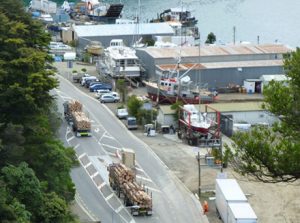New Zealand Forest Industry Contractors Association (FICA) says forestry crisis is dire and contractors are reaching breaking point in an ever-worsening situation. Rapid impacts have been felt over the past month by the forestry industry with the effects of the outbreak of the Coronavirus, with many out of work and in serious financial crisis. Source: Timberbiz
Forest Industry Contractors Association (FICA) CEO Prue Younger says people outside the industry are largely unaware of the seriousness of the crisis.
“We need to have politicians, government officials and the public outside of forestry fully understand just how dire our sector of the industry is for our contractors,” she said.
“Logging and forest roading contractors who employ the bulk of the people and carry the highest debt have been hit extremely hard. The planting crews are the least effected for now, but their work will inevitably be impacted if depressed log prices continue long enough.”
The contracting workforce is more vulnerable than ever before in any previous market crash. As a consequence of the mid 1990s planting boom, far more of the national cut is now in smaller forests.
Smaller owners have a short window to harvest and are far more sensitive to price drops than larger corporate forests historically were. Lay-offs are a direct result, with hundreds of workers already laid off and more to follow.
“Our contractors do not have cash reserves to sustain unemployed staff or the capital repayments on their machinery,” Ms Younger said. “To top it off, we are now heading into winter, when economic conditions typically only get tougher for contractors.”
The effects to transport are being felt as well where logging truck drivers are a good example of the flow on this is having to the supply chain flow. As the harvest volume drops, the truck drivers get laid off and then the ports and stevedore companies feel the pressure of unemployment too.
Log Transport Safety Council (LTSC) Chairman Warwick Wilshier says trucking contractors are mirroring the downturn equally with forestry contractors. At the same time logging truck contractors are concerned about the work being carried out around deployment.
“The lack of truck drivers prior to the COVID-19 crisis was bad enough and now their drivers are seen to be an easy target for work in other industries like horticulture, freight and road maintenance,” Mr Wilshier said.
“After a few weeks of paying wages and getting no work in, there is only one option – for contractors to relinquish their staff to other opportunities outside of forestry.
“It is hardly ideal, and the fear is that they will walk and not come back. When work starts up again there is going to be a massive hole in the workforce that will take time to build up.”
Those same sentiments are being felt as FICA engage with deployment opportunities being offered to contractors by horticulture.
“About to start their season, they are desperately short of equipment operators, along with tractor and forklift drivers, and the skills learned in forestry are generally transferrable,” Ms Younger said.
“The social dilemma is turning our focus to support our workforce in maintaining some income for families and whanau. We acknowledge the extreme social effects this crisis is having on redundant employees. We already had a significant issue meeting our workforce needs in forestry, so when business starts up again, we are going to be in a crisis situation with gaining back a skilled workforce.”
Contractors have reached breaking point where some have been off work for four weeks and can no longer carry their staff with wages that are eroding their own pockets. They are now regrettably reaching out to offer them deployment options into other industries.
The solution isn’t a simple one, but more needs to be done by government and forest owners to preserve and retain a skilled workforce.
Daily trade data for the last four weeks and a day gives an updated glance at New Zealand exports to China since the COVID-19 outbreak, Stats NZ said. The high-level graphs released show total export and import values, and export and import values to and from China.
CSV files include exports and imports to and from China, including forestry products.
The data is provisional and should be regarded as an early, indicative estimate of intentions to export only, subject to revision.
These are not official statistics, but an effort to provide the latest available trade data at a time of heightened interest in trade with China.
The data compares the four weeks and a day up to 29 February 2020 against previous years. This allows for an estimate to be made of what may have happened to exports, if they had followed typical patterns in the past four weeks.
On 2 March, a comparison was released for the period 27 January 2020 to 23 February 2020 against previous years.
Stats NZ urges caution in making decisions based on this experimental data.
See Provisional indications – effects of coronavirus outbreak on New Zealand trade with China.






